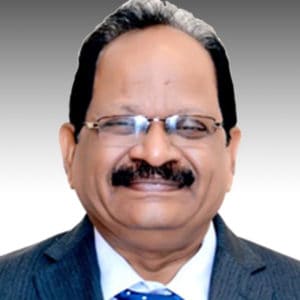An incubation centre in the electronic hardware space?
Is it even possible in India?
What about the seed funding?
Who’s going to manage it?
How can this concept be made a reality?
Well, these were some typical queries that cropped up, while crafting the Electropreneur Park—an incubation centre in the electronic hardware space. The idea behind the Electropreneur Park (EP) was to encourage the aspiring entrepreneurs across the country to be a part of electronic system design and manufacturing sector.
Well, I was lucky enough to be a part of the development and to see how this brainchild idea turned into a reality, paving the way for the first incubation project in ESDM sector in Delhi NCR.
Being the project co-ordinator, I had the opportunity to work closely with the policy makers, industry stalwarts, academia and most importantly a talented bunch of entrepreneurs.
The concept of Electropreneur Park found mention in several industry forums and entered the boardrooms as the need was felt to bring policy makers, industry stalwarts and academicians under one roof to make a vibrant ESDM sector of tomorrow. And hence, the whole process got kick-started.
Starting from the feasibility of the concept to presentation of the detailed project report, Electropreneur Park started taking shape and the above queries were parried with each passing day. Dr. Omkar Rai, Director General of STPI, decided that STPI would lead this project along with IESA as the implementation partner. IESA, in turn, carried out a transparent evaluation process to induct CyberMedia as the execution partner. The Delhi University was unanimously chosen as the academic partner for the project.
Subsequently, a presentation of the detailed project report was made in front of the Working Group of DeiTY, which accepted the proposal in-principle for complete funding. The administrative approval was received in 2014 and the project was ready for roll out.
The guidelines for the project were issued by September 2014, after which MoUs were signed between STPI, IESA and CMIL.
From Concept to Reality
With the tripartite MoU between STPI, IESA and the Delhi University in February 2009, EP finally got its physical presence. A stringent selection criterion was followed for selection of vendors for equipments and architects. Multiple rounds of interviews were conducted for the CEO as well as other available positions. Simultaneously, selection process of incubatees for the park began on a fast pace. The activities started taking concrete shape with the CEO and team on board and finally the park at the Delhi University was dedicated to the nation by Minister of Law & Justice and Information Technology Ravi Shankar Prasad on August 27th, 2016, in the presence of host of dignitaries.
Moving forward, the incubatees hold a greater responsibility, to take up the mantle and fulfil the dream of Indian IP.EP now has its own team and is being led ably by Sanjeev Chopra and excellent bunch of incubatees hailing the flag high. I am sure they will be the harbinger of an ESDM revolution in the country.
However, my major learning and takeaways of this entire experience can be summed up as below:-
- From the Drawing Board to a Reality – The project made me aware about how a concept is conceived and built brick by brick till it reaches its pinnacle. I had the first – hand experience of conceiving, destroying, re-conceiving, testing and executing.
- Professionalism – Every individual I met in this journey infused a greater purpose of accomplishment and a greater sense of achievement within.
- Research – Sadly, we as a country do not believe in the process of research or are reluctant to invest time and money in the process of research per se. This is something what was observed across the board. I could come across situations in which decisions were relied largely on the gut feel rather than scientifically-backed research findings. Investment in this area is likely to aid swifter and correct decision making realms of professionalism. It goes without saying; all of us were committed to make this a reality. Since this was the first project of its kind, we may not have done everything immaculately, but we strived hard to stay on course and make this a reality.
- Thought Leadership – Starting from the coveted members of Project Evaluation Team to incubates–who had submitted their business plans–showcased exemplary thought leadership in their area of interest.
- Dynamism – I experienced exemplary instances of dynamism from the Government officials, academicians and industry players.
At the same time, in my opinion the following things could have been done in a better way for faster execution of the project:
- Lesser Deviation from Roles Outlined in DPR – DPR for any project is usually prepared after meticulous judging of strength of a particular stakeholder, which ideally should not change at a later date. This only adds to the delays.
- Swifter Decision Making – Although there have been numerous instances of decision making at lightning speed for this project, there were also instances which highlighted the other side of the coin. India is changing and we are sure we shall be able to make huge progress in this front in future.
- Smooth transition – A swift change of guard impairs the pace of a project. It is advised a gradual transformation and proper training of the new entrants be taken up.
Lorem ipsum dolor sit amet, consectetur adipiscing elit, sed do eiusmod tempor incididunt ut labore et dolore magna aliqua. Ut enim ad minim veniam, quis nostrud exercitation ullamco laboris nisi ut aliquip ex ea commodo consequat.











